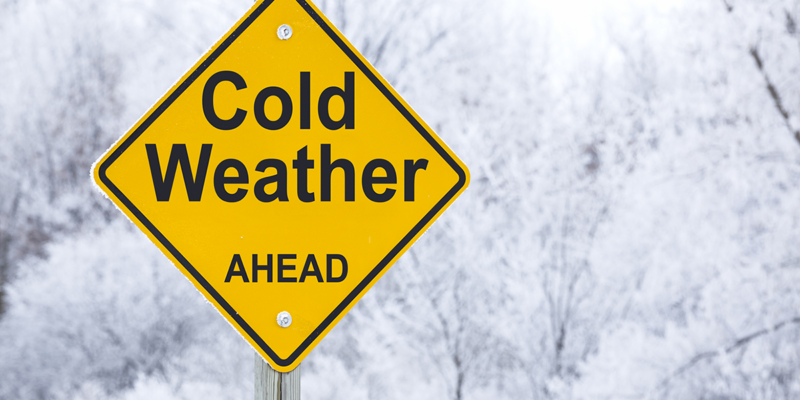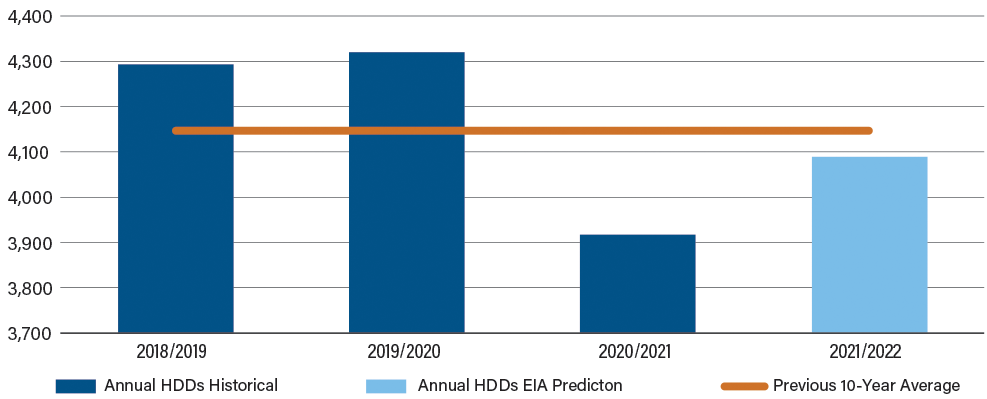Colder Forecast, Higher Fuel Costs To Drive Up Heating Bills

A slightly colder winter forecast throughout the United States combined with surging energy prices will drive household heating bills to the highest level in years according the U.S. Energy Information Administration (EIA).
The National Oceanic and Atmospheric Administration’s (NOAA) 2021–22 winter forecast calls for a marginally colder winter than last year and closer to the average winter temperatures from the previous 10 years. EIA uses heating degree days (HDDs) to measure how cold temperatures are compared with base temperatures. More HDDs correspond with colder temperatures. Based on NOAA’s winter forecast, EIA expects the Northeast, Midwest and West will have 3 percent to 4 percent more HDDs this winter than last year and that the South will be similar to last winter.
Winter Heating Degree Days (HDDs) - U.S. Lower 48

Source: U.S. Energy Information Administration Short-Term Energy Outlook, November 2021
EIA projects that U.S. households that use natural gas, heating oil or propane as the primary fuel to heat their homes will see significant year-over-year price increases due to higher fuel costs and greater fuel consumption. Heating costs for natural gas are expected to go up 30 percent, heating oil is expected to rise 43 percent and propane is expected to jump 54 percent compared with last winter. Households that heat primarily with electricity are expected to see a 6 percent bump from last year due to higher residential electricity prices and a slight increase in consumption.
The increased cost of fuel for power generation, especially natural gas, will lead to an expected 3 percent decline, to 32 percent, in natural gas power generation usage this winter, while electricity generation fueled by coal will rise 1 percent to 24 percent of U.S. generation.
“Due to forecasted higher electricity demand as well as higher natural gas prices, co-ops and their consumer-members can expect marginally higher costs this coming winter,” CFC Vice President of Utility Research and Policy Jan Ahlen.
U.S. Electricity Generation by Source

Source: U.S. Energy Information Administration Short-Term Energy Outlook, November 2021